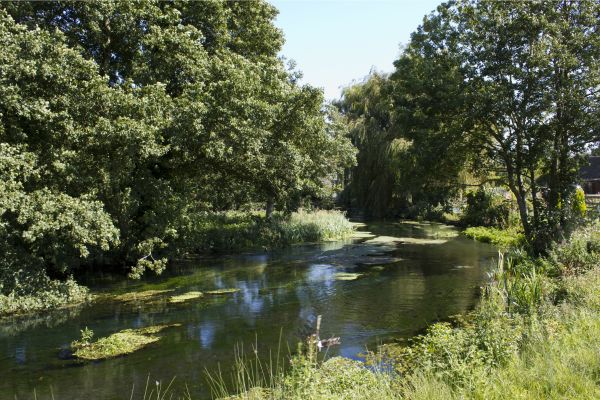Riparian zones, explained

Freshwater ecosystems play such an essential role in nature that their importance surpasses aquatic systems themselves, spilling into buffer zones where water meets land and well beyond these borders. These scenic landscapes where blue and green spaces come together provide a range of benefits for people and biodiversity and are known as riparian zones.
Riparian zones are the transitional areas between bodies of water, such as rivers, lakes and streams, and the land around them. Streambanks, riverbanks, and floodplains are examples of riparian areas. Their soils and vegetation are shaped by the presence of water, accumulating sediment, and storing water. They connect terrestrial and aquatic ecosystems and are essential for their health.
Riparian vegetation’s root systems stabilise riverbanks, holding soil in place and preventing erosion and excessive sedimentation from reaching the water. They also filter run-off pollution, absorbing and trapping nutrients and chemicals, playing an essential role in maintaining water quality. They can capture up to 90% of sediments, 65% of nitrogen, and 30% of phosphorus. This tall shoreline vegetation also casts shadows that reduce the amount of solar radiation and help regulate air and water temperatures.
The variety of trees and plants supports biodiversity in many ways, such as providing habitat for amphibians, insects, invertebrates, and other species, which are in turn, important food sources for fish; acting as corridors to connect different habitats and enabling wildlife migration; and enriching rivers with nutrients from plant litter which forms the basis of the aquatic food web. Woody debris provides yet another range of benefits for wildlife by enhancing the amount of food at the bottom of the food chain, as well as slowing down the water flow, creating pools which function as resting and sheltering areas for fish, improving their habitats.
These areas are also of great importance for people. They play a key role in mitigating flood effects on land, dissipating the energy, speed, and volume of flood water, and preventing downstream damage. Riparian zones absorb and store water during high flows and slowly release it to the stream on low flow periods. These scenic areas are also popular spots for recreational activities such as hiking, canoeing, bird watching and others, bringing economic benefits to local communities.
They can also be great allies in fighting climate change by sequestering carbon due to their high productivity, biodiversity, and ecosystem function. The variety of plants, trees, shrubs, and grasses form a complex vegetation layer. The complexity of riparian soils and their abundance of organic material are directly linked to increased carbon storage.
Despite the huge importance of these ecosystems, just like many others, they’re under threat from deforestation for agriculture clearance, pollution, urbanisation, commercial non-native forestry, and invasive species, to name a few. These negative impacts are felt not only in riparian zones, but they cascade across freshwater and land systems. In times of climate and biodiversity crises, we can’t afford to turn a blind eye to those any longer.
